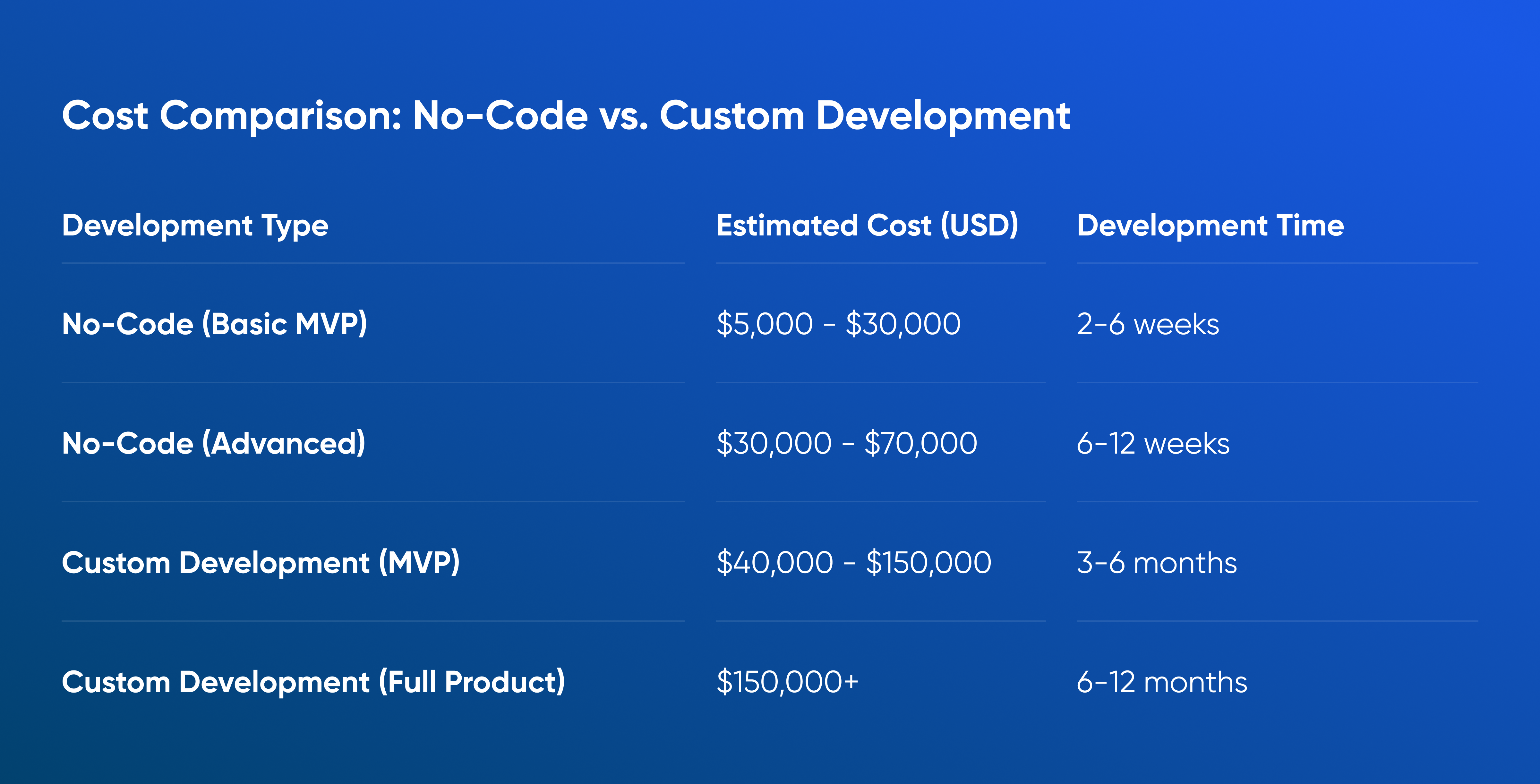Introduction
For startup founders and business owners, choosing between custom development and no-code solutions is a critical decision that affects cost, scalability, and time-to-market. In 2025, no-code platforms have gained popularity for their speed and affordability, but custom development remains essential for complex and scalable products.
This guide compares custom development vs. no-code, outlining the pros, cons, and best use cases to help you make an informed decision.
1. What Is No-Code Development?
No-code development allows users to build apps without writing code, using drag-and-drop interfaces and pre-built templates. Popular no-code platforms include:
✅ Bubble – Best for web apps & SaaS platforms.
✅ Webflow – Ideal for websites & eCommerce.
✅ Adalo & Glide – Great for mobile apps.
✅ Zapier & Make – Automates workflows without coding.
Advantages of No-Code Development
💡 Faster development – Launch MVPs in weeks, not months.
💡 Lower costs – No need for expensive engineering teams.
💡 Easy to use – Ideal for non-technical founders.
Limitations of No-Code Development
🚨 Limited customization – Pre-built templates restrict flexibility.
🚨Scalability issues – No-code platforms struggle with complex, high-traffic apps.
🚨 Third-party dependency – Your app relies on the platform’s infrastructure.
2. What Is Custom Development?
Custom development involves writing code from scratch using frameworks like React, Node.js, Python, or Swift, offering unlimited flexibility and scalability.
Advantages of Custom Development
✅ Full customization – Tailor features exactly to business needs.
✅ High performance – Optimized for speed and scalability.
✅ Better security – Custom solutions provide stronger data protection.
✅ No third-party dependency – Own your code, host it anywhere.
Limitations of Custom Development
🚨 Higher initial cost – Requires experienced developers.
🚨 Longer development time – 3-12 months vs. weeks with no-code.
🚨 Technical complexity – Requires ongoing maintenance.
3. Cost Comparison: No-Code vs. Custom Development

💡 Tip: Start with no-code for MVP validation and switch to custom development for scaling.
4. Which One Should You Choose?
Use No-Code If:
✅ You need to launch quickly with minimal budget.
✅ Your product is a simple web or mobile app.
✅ You are testing an MVP before investing in full development.
✅ You don’t have an in-house engineering team.
Use Custom Development If:
✅ Your app needs high performance, scalability, or unique features.
✅ You are building a complex SaaS, fintech, or AI-powered product.
✅ You require advanced security and data control.
✅ You want long-term ownership and flexibility over your code.
5. Hybrid Approach: Best of Both Worlds
💡 Many startups use a hybrid model—starting with a no-code MVP and transitioning to custom development as they scale.
🚀 Example Strategy:
1️⃣ MVP: Launch a no-code version using Bubble or Webflow.
2️⃣ Validation: Gather feedback & refine the product.
3️⃣ Scaling: Migrate to custom development for long-term growth.
Conclusion: Which Approach Is Best for You?
Both no-code and custom development have their place in modern startup strategy. The key is to choose based on your goals, budget, and long-term vision.
✅ No-Code: Best for rapid prototyping & MVP testing.
✅ Custom Development: Ideal for scalable, high-performance applications.
✅ Hybrid Model: Start lean, scale smartly.
🚀 Need help choosing the right approach? Movadex specializes in custom software and no-code solutions to help startups scale efficiently.
📩 Book a free consultation today and let’s build your product the smart way!




